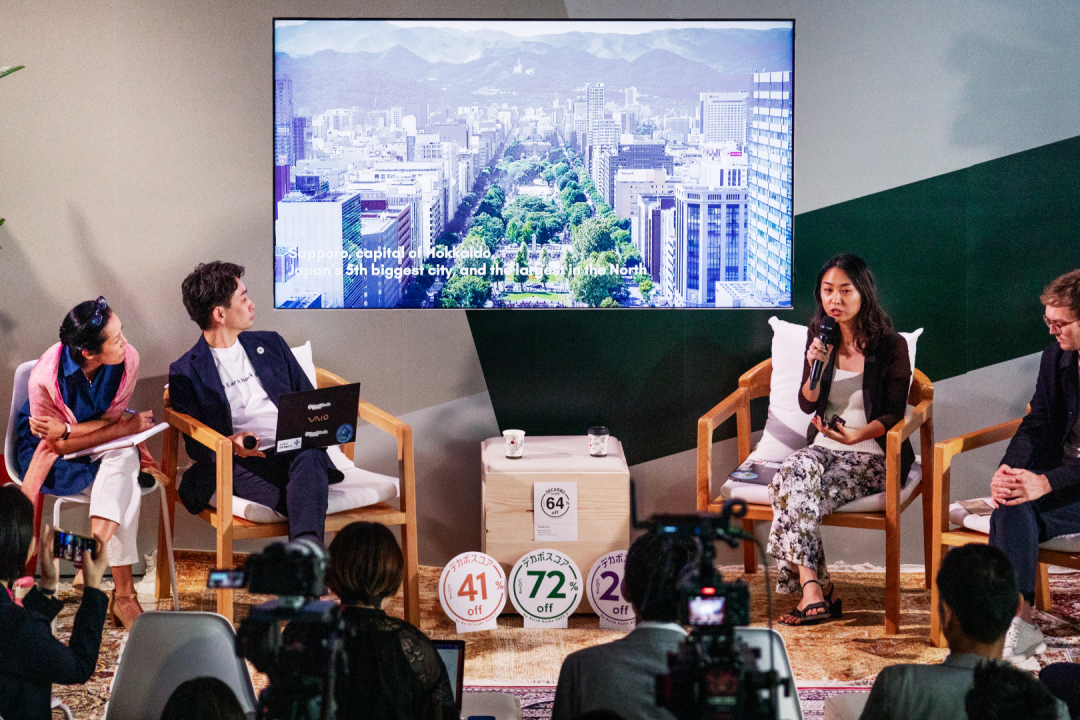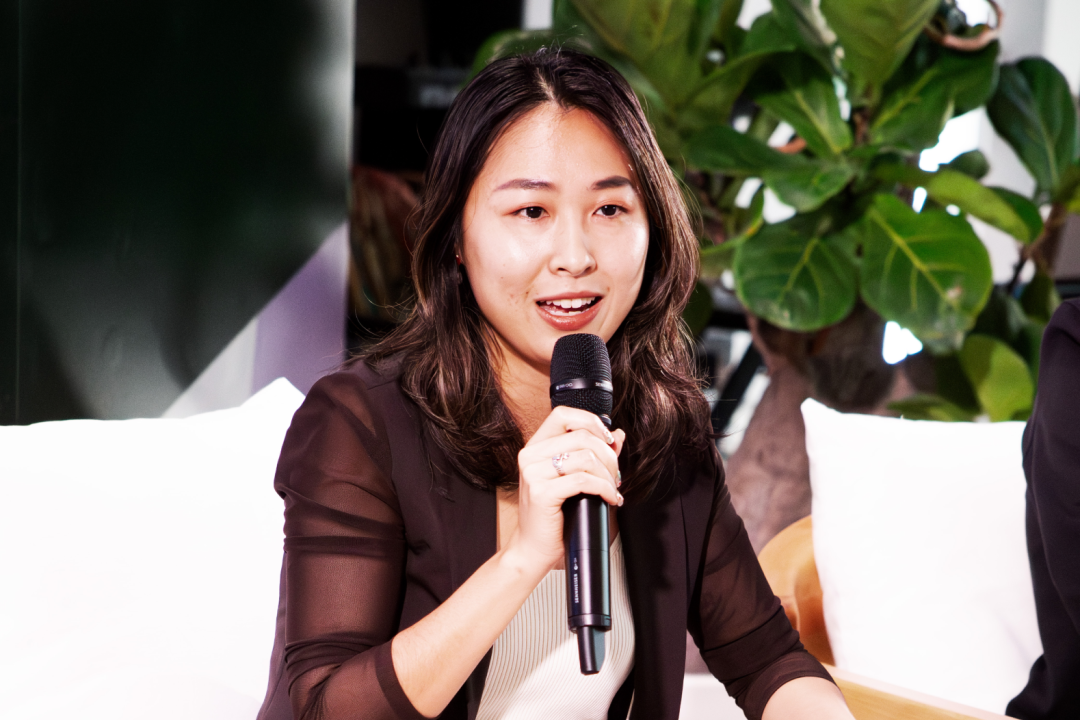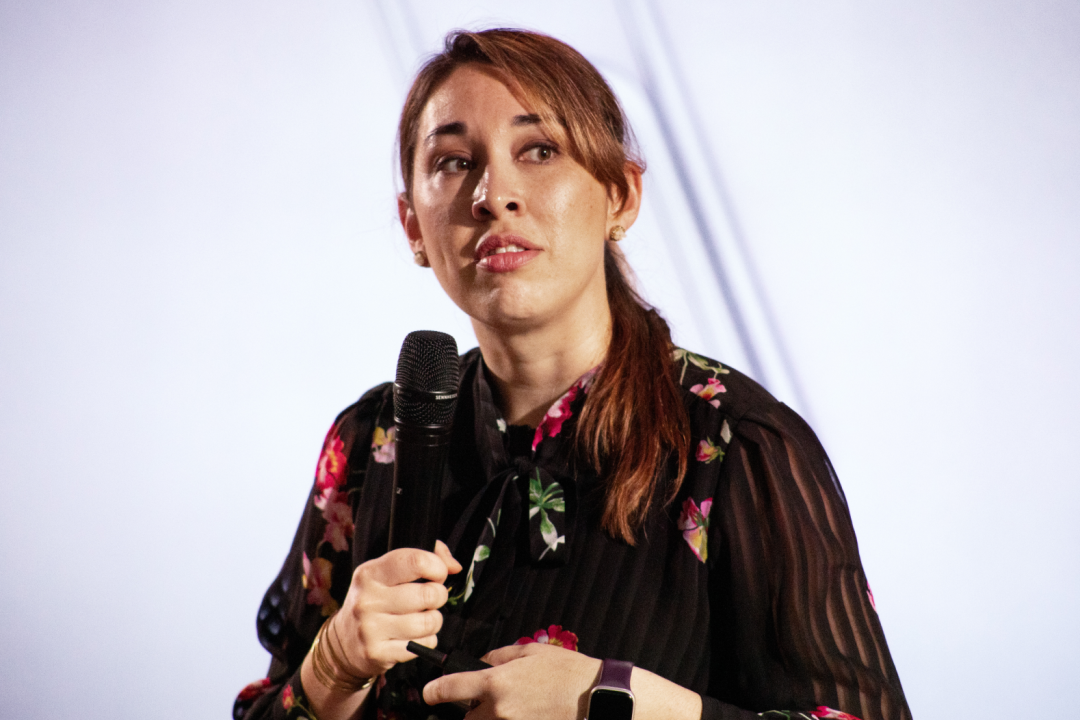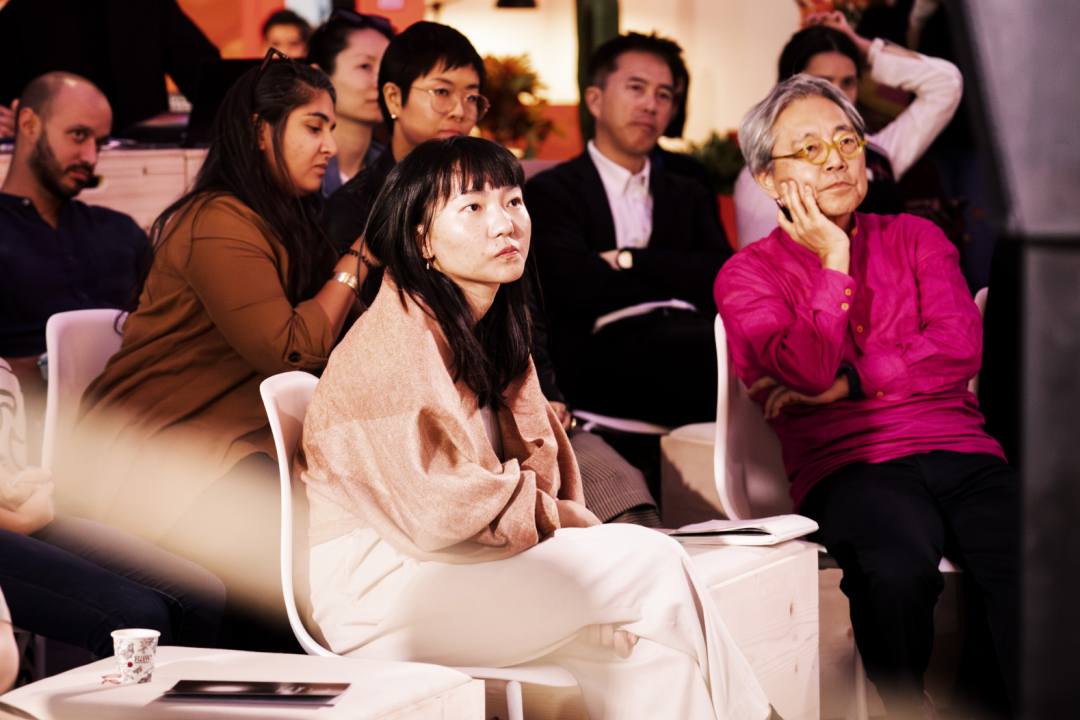
That’s a Wrap for kyu House
After five full days on Alserkal Avenue, kyu House at COP28 comes to an end.

All photos: Hiiiya for kyu House
SESSION RECAP
What We Heard
During kyu House’s final session, the distinguished panel of leaders identified their leadership styles. Their responses were as varied as their backgrounds.
“I think my leadership style is like The Loom,” said Wanjira Mathai, Managing Director of World Resources Institute for Africa and Global Partnerships, pointing above toward the kyu House installation from Architecture + Other Things. “Inclusion is crucial. We show up deeply in our own experience, our own culture.”
“There’s an African saying,” said Michael Okoroafor, Chief Sustainability Officer, McCormick & Company. “If you want to go slow, go alone, but if you want to go fast, go together. If you want to solve the climate crisis, go together. What is your purpose along the journey? It is how many people you take along the journey.”
“Listen carefully,” said Sophie Lambin, CEO of Kite Insights. “By listening carefully you find those blind spots, and at the intersection, you find those inclusive moments.”
“If I want to talk about leadership, I’m really talking about Dubai,” said Abdulaziz AlJaziri, Deputy CEO and COO, Dubai Future Foundation. “We are one of the only countries that has a 50-year vision to 2071. We know exactly where we want to go. Dubai is more than anything else, an optimistic city.”

Highlights From Thursday
When it comes to climate, IDEO chair Tim Brown believes we’re at a tipping point. “I think it’s obvious to most people that climate is the biggest challenge facing society and humanity,” he says. “Therefore, there is clearly a role for design and creativity. But we’re at a moment when the world, governments and scientists have spent the last couple of decades talking about targets, and how to treat climate change as a serious problem.”
“We’re at that point where businesses and governments have to shift towards innovation,” he continues. “I get a sense from being here that those conversations are really getting going. As creative people, I feel like we’re being invited into the conversation. I think some of these organizations are ready for it.”


In the spacious courtyard outside of kyu House, 30 international C-suite executives mingled with local teenagers in a roped-off square of space, bisected down its middle. Collectively, the crowd waited to hear from IDEO Senior Design Director Alex Gallafent who asked, “To make progress, is it better to think of nature as a commodity, or a sacred trust?”
For a few seconds, the individuals contemplated where they stood before moving to the right side, the left, or the middle. Then, Gallafent encouraged people to share why they made their choice, before allowing them time to reposition.
To make progress, is it better to think of nature as a commodity, or a sacred trust?
The exercise, held daily at kyu House, is called “Creative Tensions,” and is a joint production between IDEO and the Sundance Institute. Consisting of 20 thought-provoking questions on various subjects, it’s been held worldwide for the past decade, involving as many as 300 people at a time. “I can never predict what will happen at Creative Tensions,” said Gallafent. “It’s building a muscle for being safely intentional with ideas and each other. It’s always a surprise in the best possible way.”


“Less than 30% of Japanese youths feel that they can be changemakers,” said Mana Saza, the Director and Sustainability Strategist at the Tokyo-based youth platform SWiTCH. “They feel like their voices don’t matter as many of those with power are over 65.” SWiTCH aims to change that. In the afternoon session, Transforming Habits, Saza announced a campaign to make the Shibuya ward in Tokyo — home to over 200,000 residents — the most biodiverse district in the world. The plan is to increase greenery, talk to local governments and corporations, and get people to support the change. “If it works, we can use this as a template for other Japanese cities,” she said confidently. “We can do this!”


BEworks recently surveyed 2,000 people across four countries (the U.S., U.K., U.A.E. and Japan) to ask what people think of the climate crisis, who is ready to act, and what kind of organizational culture supports these individuals. “Sad to say,” said Angela Cooper, BEworks Senior Strategist, “feelings about addressing the climate crisis are low. Globally, nearly half of individuals in our research feel helpless and overwhelmed.”
Cooper, who shared these results at the Unleashing Creativity in the Climate Era session, offered a bright spot: Those with a creative mindset had higher confidence that they could contribute, and had more climate optimism and motivation. They’re also willing to put in greater effort.
Just how should companies foster creativity? “Build diversity, foster a sense of belonging, create dynamic team interactions and establish psychological safety,” offered Cooper. “It also helps if the leaders themselves are genuinely curious.”